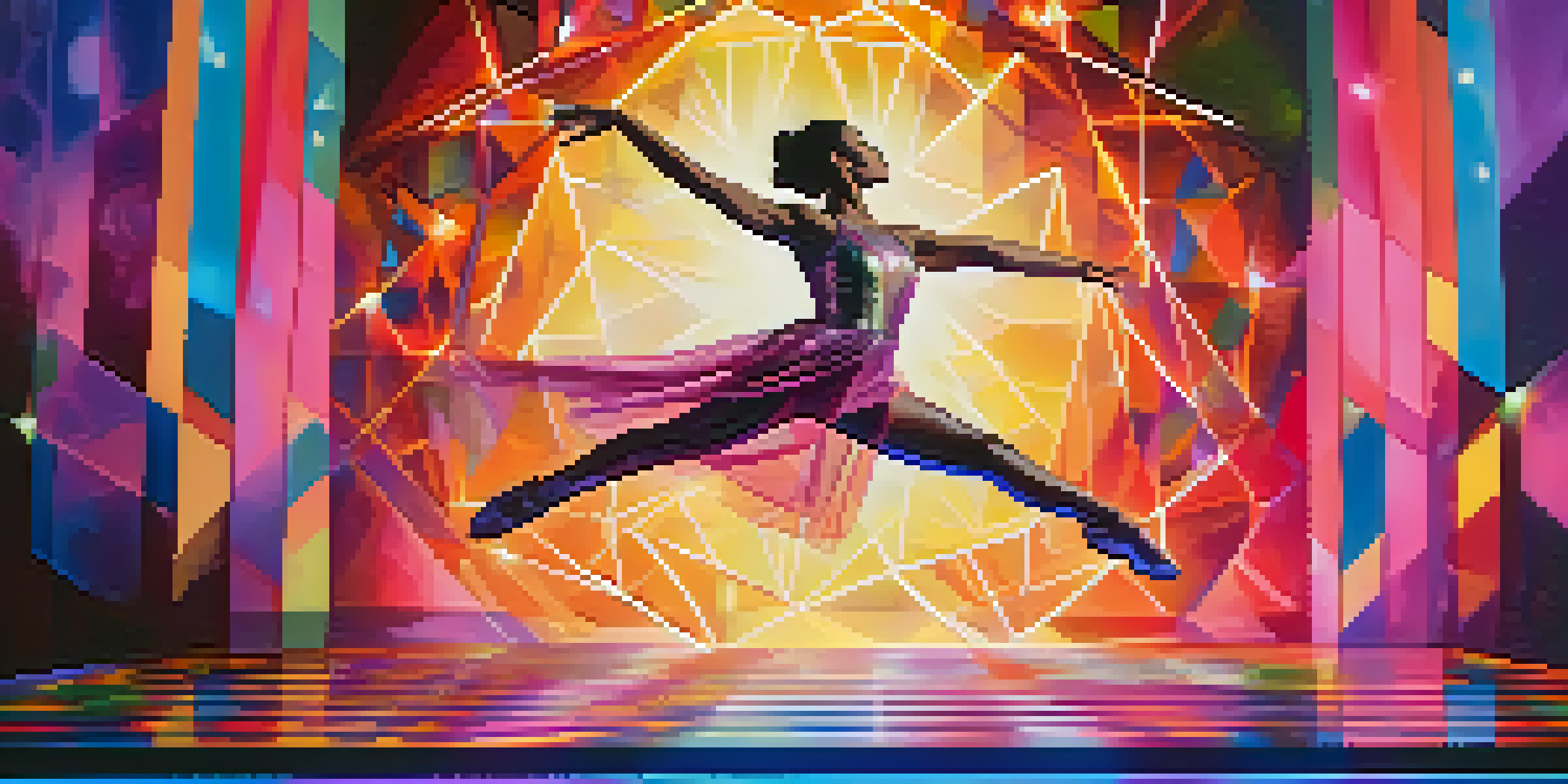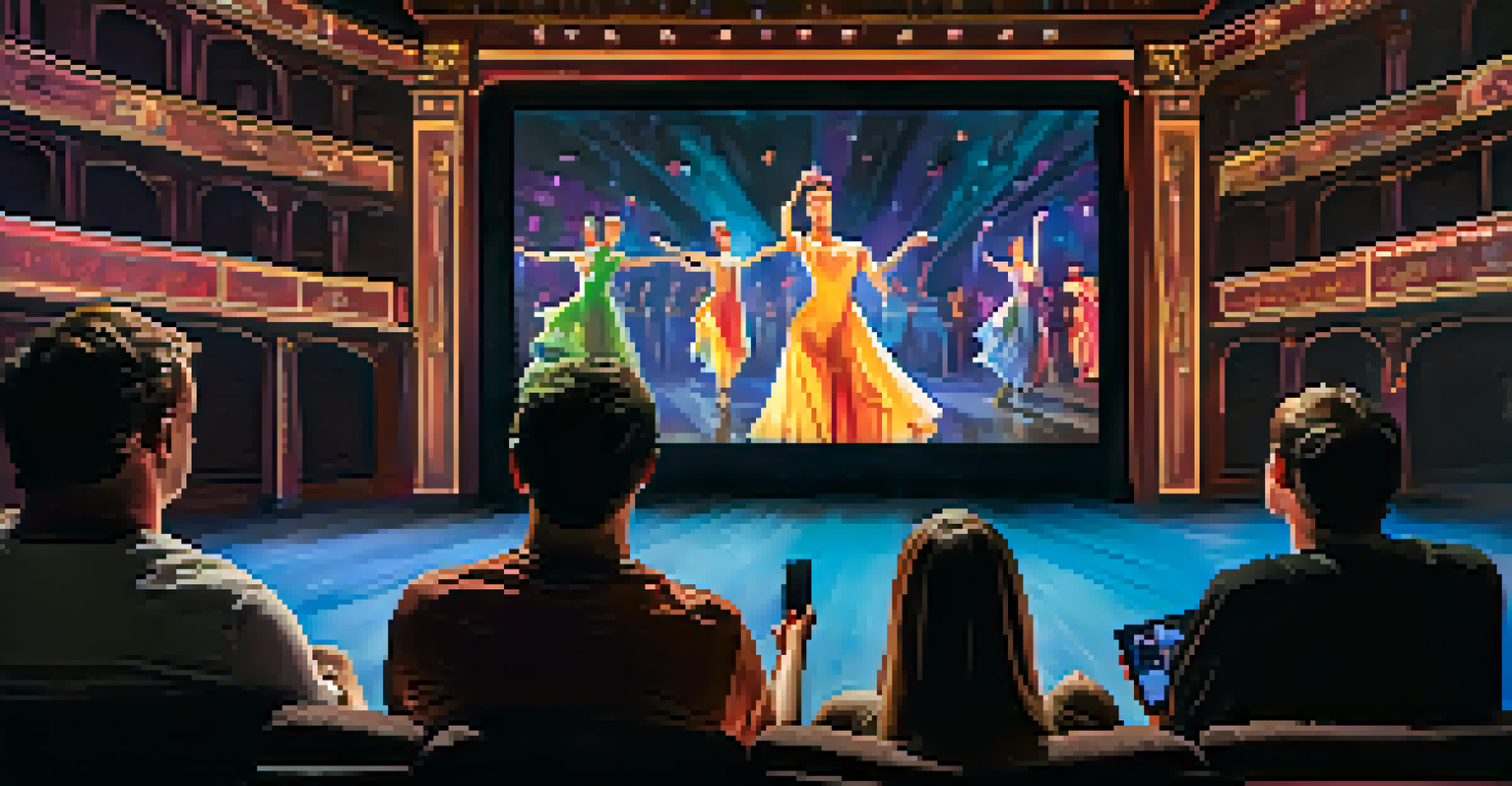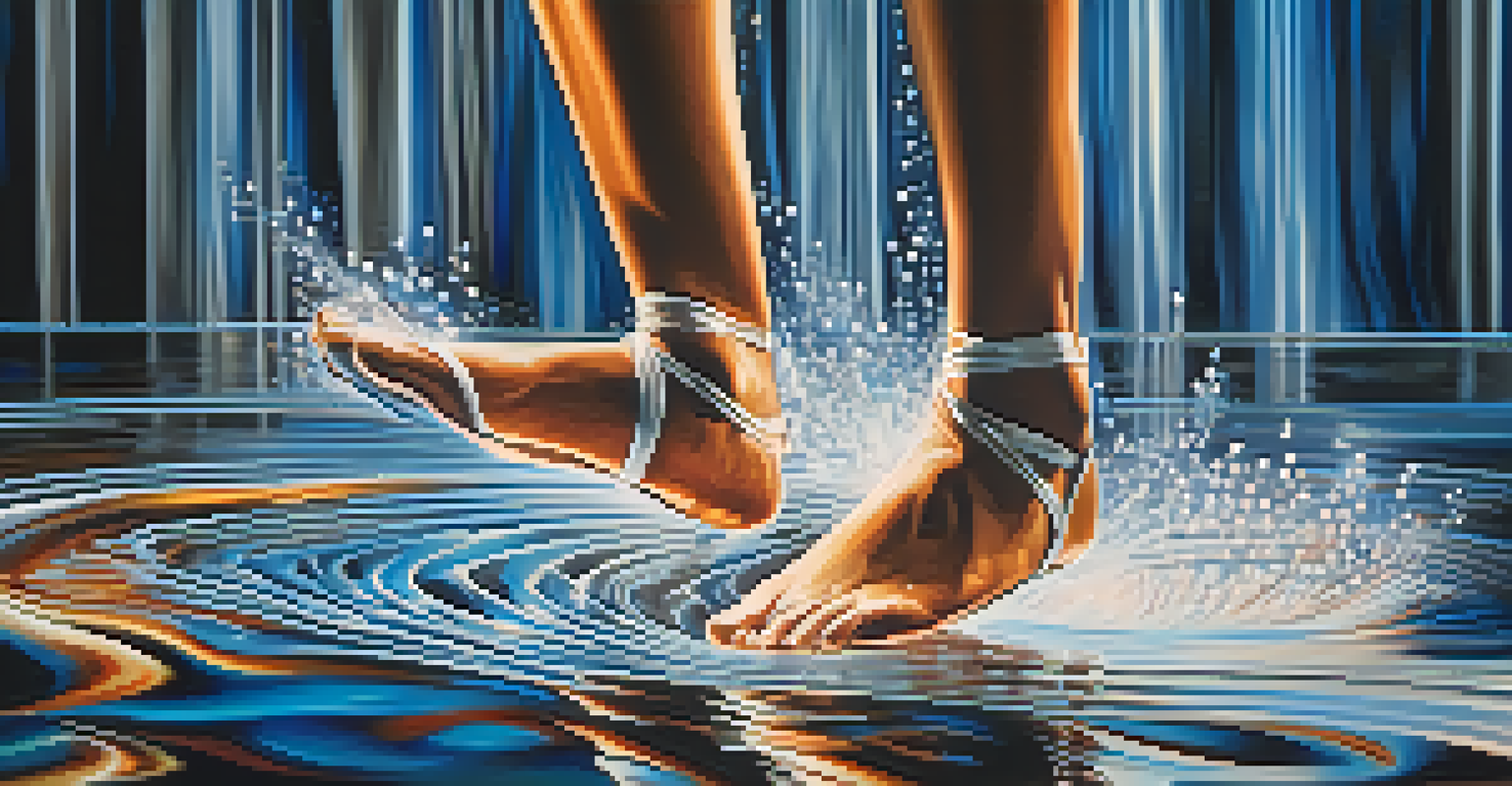Exploring the Impact of Augmented Reality on Dance Performances

Understanding Augmented Reality in the Dance Context
Augmented reality (AR) blends the physical world with digital elements, creating immersive experiences. In dance, AR allows performers to interact with virtual visuals that enhance storytelling and choreography. Imagine a dancer leaping through a digitally-created waterfall or twirling around floating geometric shapes; AR makes these imaginative scenarios possible.
Augmented reality is the next big thing in storytelling, allowing artists to engage audiences in entirely new ways.
This technology not only captivates audiences but also opens new avenues for creativity. By integrating AR, choreographers can push the boundaries of traditional performances, inviting viewers to experience dance in an entirely new way. It's as if the stage transforms into a canvas where both dance and digital art coexist harmoniously.
As AR technology continues to advance, its potential in dance is becoming increasingly recognized. The fusion of movement and technology is not just a trend but a powerful tool that can redefine how we perceive and engage with dance performances.
The Role of Technology in Modern Dance
Technology has always influenced the evolution of dance, from lighting effects to sound design. Today, AR is among the most exciting innovations, offering dancers unique ways to express themselves. The integration of AR into dance performances can enhance the emotional and narrative aspects of a show, creating a multi-layered experience.

For example, a performance could feature a dancer interacting with animated characters that reflect their emotions or struggles. This not only captivates the audience visually but also deepens the connection between the story and the physical movement. It’s a beautiful marriage of art and technology that resonates on multiple levels.
AR Transforms Dance Performances
Augmented reality enhances dance by blending physical movement with digital elements, creating immersive storytelling experiences.
Moreover, AR enables choreographers to experiment with audience engagement. Performances can become interactive, allowing attendees to influence visual elements through their devices, leading to a personalized experience that keeps them coming back for more.
Case Studies: Successful AR Dance Performances
Several dance companies have already embraced AR, showcasing its transformative power. For instance, the New York-based company, 'Aerial Dance,' created a stunning performance where dancers seemed to soar through a digitally-enhanced sky, leaving the audience in awe. This innovative approach not only highlighted the dancers' skills but also crafted a mesmerizing visual narrative.
The fusion of dance and technology is not just a trend; it’s a powerful tool for creative expression.
Another notable example is the collaboration between choreographers and tech companies, where dancers performed alongside virtual avatars. This unique pairing created a dialogue between the human body and digital representation, pushing the boundaries of what dance can convey. Audiences were left wondering where reality ended and digital artistry began.
These case studies demonstrate that AR in dance performances is not just a gimmick; it’s a powerful storytelling tool that enriches the overall experience. As more artists explore AR, the potential for groundbreaking performances continues to grow.
Enhancing Audience Experience Through AR
One of the most exciting aspects of AR in dance is its ability to enhance audience engagement. Imagine sitting in a theater and using an app that allows you to see additional visual effects that complement the live performance. This interactive experience transforms viewers from passive spectators into active participants.
With AR, audiences can gain insights into the choreography, such as seeing visual cues that guide their understanding of the narrative. This added layer of information can deepen their appreciation for the dancers' artistry and the story being told. It’s like having a backstage pass to the creative process.
Audience Engagement Through AR
AR technology allows audiences to interact with performances, deepening their connection to the narrative and choreography.
Moreover, AR can extend the reach of performances beyond the physical venue. Virtual attendance options can allow fans from around the world to experience the dance in real time, making it more inclusive and accessible. This technology is not just about enhancing performances; it's about creating a community around the art.
Challenges of Integrating AR in Dance
While the potential of AR in dance is incredible, it comes with its challenges. One major hurdle is the technical expertise required to create and implement AR experiences. Dancers and choreographers may need to collaborate closely with tech specialists, which can be time-consuming and costly.
Additionally, there’s the risk of overshadowing the dancers themselves. If the AR elements are too flashy or distracting, they can detract from the physical performance. Striking the right balance between digital enhancements and the raw beauty of dance is crucial for successful integration.
Finally, there’s the need for audience education. For AR to reach its full potential, viewers must be familiar with how to engage with the technology. Providing guidance and ensuring accessibility for all audience members is essential to creating an inclusive experience.
Future Trends: What Lies Ahead for AR in Dance
As AR technology continues to advance, the possibilities for dance performances are becoming even more exciting. Future trends may include the use of wearable technology that allows dancers to interact with AR elements in real time, creating a seamless blend of performance and digital artistry. This could lead to a new era of dynamic choreography that adapts based on audience reactions.
Moreover, we might see more collaborations between artists and tech companies, resulting in innovative platforms for creating and sharing AR dance experiences. Imagine a world where anyone can choreograph a dance and instantly see it come to life with AR—this democratization of technology could spark a creative revolution.
Future of Dance with AR Technology
As AR technology evolves, it promises to revolutionize choreography and audience experiences, fostering creativity and collaboration.
Ultimately, the future of AR in dance is bright, filled with potential for exploration and discovery. As artists continue to embrace this technology, we can look forward to performances that challenge our perceptions and engage our senses in ways we never thought possible.
Conclusion: Embracing the Dance of Technology
In conclusion, the integration of augmented reality into dance performances is a thrilling development that enhances both artistry and audience engagement. By blending the physical and digital worlds, AR opens up new avenues for creativity and expression, allowing performers to tell stories in innovative ways. This fusion of dance and technology not only captivates audiences but also challenges traditional notions of performance.
As we move forward, it’s essential for dancers, choreographers, and tech innovators to collaborate closely. By sharing insights and expertise, they can create experiences that resonate deeply with audiences and push the boundaries of what dance can achieve. The journey of exploring AR in dance is just beginning, and the possibilities are endless.

So, whether you’re a dancer, choreographer, or simply a fan of the arts, keep an eye on the evolving landscape of dance performances. The next time you see a show, you might just witness the magic of augmented reality transforming the stage into a realm of imagination and wonder.